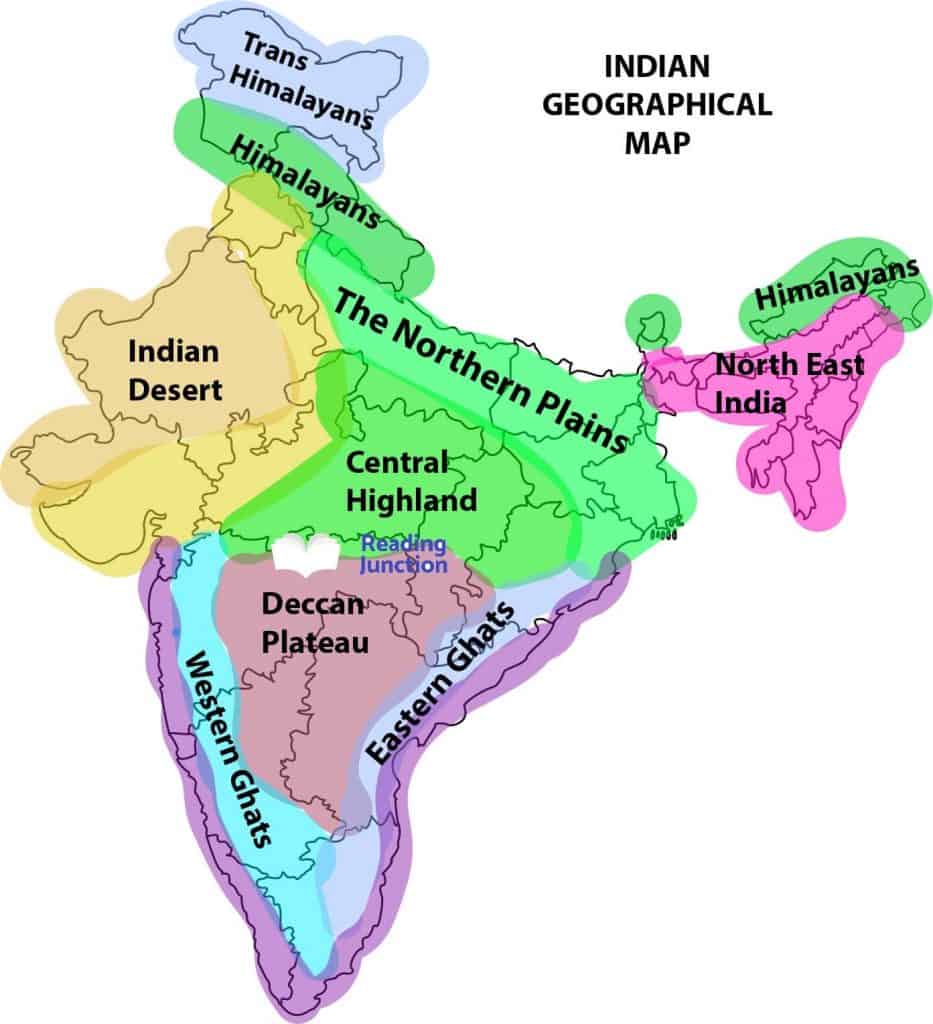Describe the Diverse Geography of the Indian Subcontinent
Introduction to Indian Geography. It is the seventh-largest country in the world with a total area of 3287263 square kilometres 1269219 sq mi.

The Physical Features Of India With Indian Geography Map
The Indian subcontinent is diverse in many ways such as the array of languages as well as the.

. Start studying Geography Indian Subcontinent. As in Egypt and Kush the flooding river created fertile plains where people first settled. 817 Patterson Office Tower.
In this chapter we will learn about the Geography of India or the Geographical features of India. The Indian subcontinent is a term mainly used for the geographic region surrounded by the Indian Ocean. Geography of the Indian subcontinent influenced the development of civilization there greatly because of how diverse India is.
- With monsoons coming yearly created religion around it - civiliztion is on the Indus river. India is situated north of the equator between 84 north the mainland to 376 north latitude and 687 east to 9725 east longitude. In search of raw materials cheap labor and expanding markets Europeans.
Learn vocabulary terms and more with flashcards games and other study tools. The Himalaya Mountain Range surrounds North of India and in south India is surrounded by the Indian Ocean. 1 The control of the Asian trade routes meant that culture and ideas could flow freely through the Empire.
Geography Of The Indian Subcontinent. India is one of the most diverse countries in all aspects that can be thought of. The Indian subcontinent is diverse in many ways such as the array of languages as well as the.
The northern part of this subcontinent is bordered by the rugged Himalayas so that land is only. The Himalayas are the source of all three and provide water to more than 1 billion people. The geography of the Indian subcontinent had a big affect not only with the development of civilization but on economics religion and social order as well.
India is surrounded by three large bodies of water with nearly 4350 miles of coastline. The Indian subcontinent has a diverse range of geographic features. Along with Mesopotamia Egypt China and Mesoamerica the ancient Indian subcontinent was one of the few places in the world to develop its own system of writing.
Describe 2 ways in which geography and climate have influenced the people of the Indian subcontinent. India comprises most of the Indian subcontinent situated on the Indian Plate the northerly portion of the Indo-Australian Plate. How did the geography of the Indian sub-continent during the reign of the Gupta contribute to the movement of the people and ideas.
The Indus River which flows from the Himalays and is located mainly in present-day Pakistan is the cradle of ancient Indian civilization. The Indian subcontinent today includes India Pakistan Nepal Bhutan and Bangladesh. India also has a vast desert many fertile plains and rugged plateaus.
The geography of the Indian subcontinent had a big affect not only with the development of civilization but on economics religion and social order as well. India also has many lakes wetlands and rivers. The diverse geography of India allows it to have a variety of plants and animals.
The Indian subcontinent consists of present-day India Pakistan Bhutan Nepal and Bangladesh. Correct answer to the question Describe the geography of the Indian Subcontinent. Geography of the Indian subcontinent influenced the development of civilization there greatly because of how diverse India is.
The geography of India is extremely diverse with landscape ranging from snow-capped mountain ranges to deserts plains hills and plateaus. The north is home to a largely flat area thats home to three of the worlds great rivers. The Arabian Sea and Bay of Bengal surround it from the west and east.
21N 78E 21. The subcontinent was once part of Gondwana the ancient southern supercontinentGeologically the origin of the Himalayas is the impact of the Indian tectonic plate travelling northward at 15 cm per year to. As the historic geography and the development patterns of India are examined the complexities of this Hindu state surface.
India is considered the worlds largest democracy. It forms the Indian Subcontinent which is a part of Asia. The Indus the Ganges and the Brahmaputra.
Learn about the geography of the Indian Subcontinent including the rivers mountains plateaus and deserts and discover how they. Where did most people in ancient India settle. The Indian subcontinent is a diverse and fertile region with monsoons droughts plains mountains deserts and especially rivers along which early cities developed in the third millennium BC.
2 The location of the Empire between northern mountains and southern seas was subject to monsoons. Having a coastline of over 7000 km 4300 miles most of India lies on a peninsula in southern. Since water bodies from three sides surround India it is also known as the Indian peninsula.
The Geography of the Indian Subcontinent. India experiences all the different forms of nature and we can consider this as a boon for thriving humankind. Bangladesh Bhutan India Maldives Nepal Pakistan and Sri Lanka.
India is a land of diverse geography. What geographical feature limited the Indian subcontinents contact with other people. European colonizers of South Asia included the Dutch Portuguese French and finally the British.
India measures 3214 km 1997 mi.

The Map Showing Hills And Rivers India Map Indian River Map India World Map

Geography Of India India Is Located On A Subcontinent In South Asia That Juts Into The Indian Ocean A Subcontinent Is A Large Landmass That Juts Out From Ppt Video Online

Main Physical Features Of India The Himalayas Indian Desert Examples India Map India World Map Ancient India Map
No comments for "Describe the Diverse Geography of the Indian Subcontinent"
Post a Comment